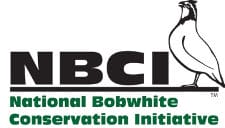By Don McKenzie, NBCI Director

Washington, DC –-(Ammoland.com)- It is time for the US Department of Agriculture to embrace a native vegetation standard across all its agencies and programs.
Such a move will be good for the birds, the pollinating bees, the monarchs and many other butterflies. And for soil health, water quality and clean air. And for taxpayers. And, yes, also for producers and landowners.
USDA does not keep good data on introduced versus native plantings. But reading between the lines of USDA data on just one program, NBCI estimates roughly 1.25 million acres of aggressive, introduced vegetation that provides poor habitat was subsidized on private lands across the bobwhite’s range in 2014, by the Environmental Quality Incentives Program. In contrast, NBCI’s annual habitat management inventory documented only about 750,000 acres of private lands bobwhite habitat management fostered by state wildlife agencies that same year
(See NBCI’s Bobwhite Almanac, State of the Bobwhite 2015 ).
Across USDA, multiple programs in multiple agencies are working at cross-purposes with themselves: supporting native grassland restoration while subsidizing the spread of aggressive introduced plantings for agricultural and conservation purposes that replace and degrade native habitats.
Bottom line: bobwhites and many other at-risk grassland species still are losing ground every year.
The waterfowl conservation community figured out decades ago the fundamental dilemma of such an imbalance. A potent concept, known as “No Net Loss/Net Gain,” highlighted the need for a two-fold approach to restore ebbing waterfowl populations. Minimizing wetland losses was necessary before wetland restorations could catch up and begin rebuilding the continent’s total wetland habitat acreage.
The duck guys acted and fixed their problem by supporting legislative and regulatory policy reforms for wetland conservation.
The quail/songbird/monarch/pollinator guys should take heed. The nation’s native grassland habitats and wildlife populations cannot be stabilized or restored until the federally subsidized losses and degradation are minimized. Quail conservationists have been talking about this problem for many years, with no traction and no resolution. Meanwhile, the major federal public land management agencies already have adopted native vegetation policies – US Fish and Wildlife Service, Bureau of Land Management, National Park Service. Even the USDA Forest Service has a native vegetation policy. But not USDA’s agriculture agencies.
Natives First is NBCI’s national leadership effort to reform USDA’s decades-long tradition of relying primarily on aggressive plants introduced from other continents for conservation and production programs. Natives First would establish a new standard at USDA, so that native plants that provide high-quality wildlife habitat would become the default preference for all publicly funded financial and technical assistance programs. Note that our concept is not called “Natives Only.” We know some introduced plants that are not aggressive can provide suitable habitat for some wildlife. We also recognize some specific, narrowly-defined situations may require reliance on introduced plants that provide poor habitat. But those examples are, and should be treated as, just the exceptions.
NBCI is circulating a letter to Congress asking for a native vegetation standard at USDA to be included in the 2018 Farm Bill. That community letter has been signed by 50 partners, and more are asking to be added. NBCI also has established a Natives First Coalition, a more enduring alliance of partner groups committed to this cause for the long term. Check out NBCI’s website (www.bringbackbobwhites.org/conservation/natives-first/) and our Natives First Facebook page for more information. We invite you, we need you, to join the Natives First Coalition.
The dire native grassland decline has been 75 years in the making; it won’t be solved overnight. But until a native vegetation standard is established at USDA, the problem won’t be solved at all. This is big ball. Adoption of Natives First by USDA could be the single most important conservation action to tilt the nation’s private land playing field in favor of restoring at-risk grassland wildlife.

About NBCI
Headquartered at the University of Tennessee Institute of Agriculture’s Department of Forestry, Wildlife and Fisheries, NBCI is an initiative of the National Bobwhite Technical Committee (NBTC) to elevate bobwhite quail recovery from an individual state-by-state proposition to a range-wide leadership endeavor. The committee is comprised of representatives of 25 state wildlife agencies, various academic research institutions and private conservation organizations. Support for NBCI is provided by the Federal Aid in Wildlife Restoration Program, state wildlife agencies, the University of Tennessee and Park Cities Quail.
For more information, please visit www.BringBackBobwhites.org.
